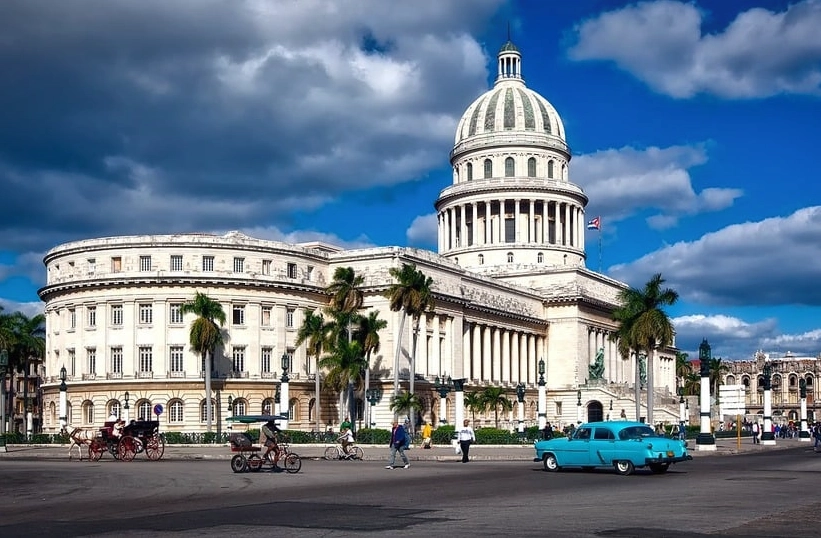After the collapse of communism in the USSR and Eastern European countries, five socialist economic systems have remained in the world under the control of the Communist Party: China, North Korea, Cuba, Laos, and Vietnam. Excluding North Korea and Laos, for the lack of statistical information, we are left with three countries with two different economic-social models. One is the central plan of Cuba and of large state-owned enterprises dominating the market and private property, with timid and incomplete market-oriented reforms that have been incapable of generating economic growth. Quite the contrary, North Korea follows this model but without reforms. The other model is the Sino-Vietnamese “market socialism” where small, medium, and some large private businesses and the market predominate under a decentralized plan (a sort of road map for development), while the state regulates the economy and controls the larger companies (Laos also follows this model). In this framework, the share of the state sector in the Gross Domestic Product (GDP) has decreased significantly in China and Vietnam: 27% and 31% in 2019 respectively, but in Cuba, it remains at 91%.
In order to make an adequate comparison between the two models (and the three countries), it is first necessary to attack the problem of diverse characteristics that could impede such a comparison. For example, China’s territory is 86 times the size of Cuba’s and its population is 123 times that of Cuba. In addition, the U.S. embargo against Cuba has been longer than that suffered by Vietnam. However, when one examines numerous indicators, including demographics, Human Development Index, etc., one finds that most of them are similar in the three countries.
Moreover, small countries, both in area and population, such as Switzerland, the Netherlands, Denmark, and Estonia have succeeded in achieving very high levels of human development despite having a land area less than half that of Cuba. Finally, under the U.S. embargo, Vietnam began the reform process. It can be concluded that divergent indicators are not an obstacle and, therefore, the models and countries are comparable.
The main economic policies
The five main economic policies of the two models are ownership of the means of production and the role of the market versus the plan; land reform; the industrialization process; employment and unemployment; and monetary and exchange unification. A detailed comparative analysis shows that Sino-Vietnamese policies have been more effective than Cuban policies.
For example, the land reform in China and Vietnam gave freedom to agricultural producers to produce whatever they wanted, sell to whomever they wanted, and set prices by supply and demand. This eliminated frequent famines in China and made China virtually self-sufficient in food. Vietnam turned from a food importer to a food exporter, and today is the world’s second-largest rice exporter.
In Cuba, on the contrary, the state influences which crops to produce, forces agricultural producers to sell part of the harvest (up to 70%), and fixes the selling price below the market price. As a result, Cuban agricultural production has plummeted, and the island has to import US$2 billion worth of food and suffers acute shortages.
Another similar effect has been the monetary and exchange unification that in China-Vietnam was done in a relatively short period and soon reduced inflation and expanded exports. While in Cuba unification has caused inflation between 500% and 1,000% — with an increasing trend — and a drop in exports of 59% between 2013-2022. When ranking the three countries concerning the five policies, Cuba always lags behind China and Vietnam.
A measurement of the economic-social performance of the two models and the three countries using the 20 most relevant and comparable indicators (10 economic and 10 social), shows that the China-Vietnam model has had a remarkable positive effect while Cuba’s has led to economic crises and social deterioration. Between 2009 and 2020, GDP grew at an annual average of 7.4% in China, 5.9% in Vietnam, and 0.9% in Cuba.
The effect of the two economic models on social protection (contributory pensions, health care, and social assistance) in the three countries, based on the principles of social security elaborated by the International Labor Organization, results in a ranking equal to the previous ones: China, Vietnam, and Cuba.
The development index
The results analyzed are even more relevant when it is considered that, at the time of their revolutions, the two Asian countries had a much lower level of economic-social development than Cuba. This gap required China and Vietnam to make a greater effort to match and surpass Cuban achievements. Cuba developed social security much earlier, faster, and more expansively than it could financially sustain, which has made it unsustainable in the long term, especially given its poor economic performance.
In contrast, China’s and Vietnam’s social security developed gradually and is backed by successful economic performance, making it more financially sustainable. Finally, Cuba’s accelerated aging has adversely affected the financial sustainability of the social security system, while it is beginning to impact China, but not yet Vietnam.
Why the success of the Sino-Vietnamese model that keeps the Communist Party in power has not been followed by Cuba’s government? It is impossible to give a definitive answer, but Cuba’s history under the revolution suggests two explanations. The first would be that the Cuban leadership is reluctant to delegate economic power to the non-state sector because it considers that this implies ceding political power (although in China and Vietnam the Communist Party remains in power). Second, Cuban leaders are also afraid of implementing Sino-Vietnamese style structural reforms because they would generate a dynamic that would make it unstoppable, like the simile of the snowball rolling down the mountain.
Cuba is suffering the worst economic and social crisis since the revolution. In the last two years, it has been moving toward the Russian model of oligarchic capitalism. However, Russia’s GDP per capita is much lower than that of most Central and Eastern European countries that were under Soviet rule. The solution for Cuba would be to take the path of the Sino-Vietnamese model adjusting it to its own characteristics. I would prefer the model of the Scandinavian countries with excellent socio-economic success and democracy, but which would be politically more difficult to implement.
This article is based on the author’s forthcoming book “Comparison of Economic Models and Social Security Performance in Cuba and China-Vietnam” (University of Pittsburgh Press, in press 2024). The statistics used are the official statistics of the three countries up to 2022.
*Translated by Janaína Ruviaro da Silva from the original in Spanish.













